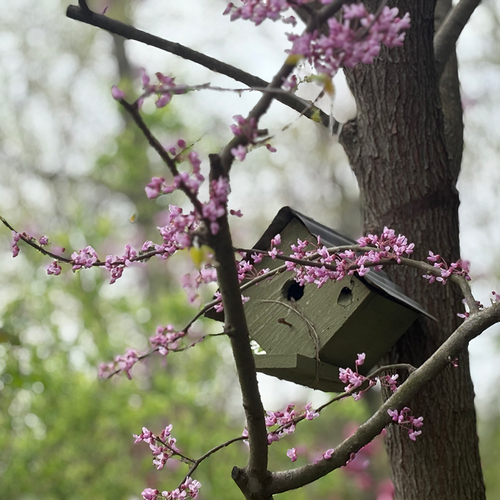
Hi GPODers!
The queen of spring is back! At the end of March we were treated to the earliest blooms in Carla Zambelli Mudry’s garden in Malvern, Pennsylvania—if you missed those posts, check them out here: Early Spring Flowers in Carla’s Garden, Part 1 and Part 2. At the time, her landscape was just starting to come alive with a mix of hellebores, snowdrops, and daffodils. A little over a month later, her garden has absolutely exploded into color. Of course, some daffodils and other spring bulbs are still in the mix, but they’ve been joined by a range of other stellar spring performers. As always, Carla sends in so many amazing photos (and a few great videos this time, too!) that I couldn’t narrow them down to just one day. Today we will be enjoying some of the best spring blooms Carla’s garden has to offer, and tomorrow we’ll be highlighting the interesting foliage that emerges as weather warms up.
Greetings from mid-spring in my garden! This is the time of year when it feels like something new is happening every hour of the day. It’s a busy time of planting and early weeding (which I hate) and feeding plants like my roses. The birdsong is a joy every day. My favorite birds, which are the bluebirds and Carolina wrens, are back and nesting, and I am waiting for the ever-sociable catbirds to make their appearance. Happy gardening!
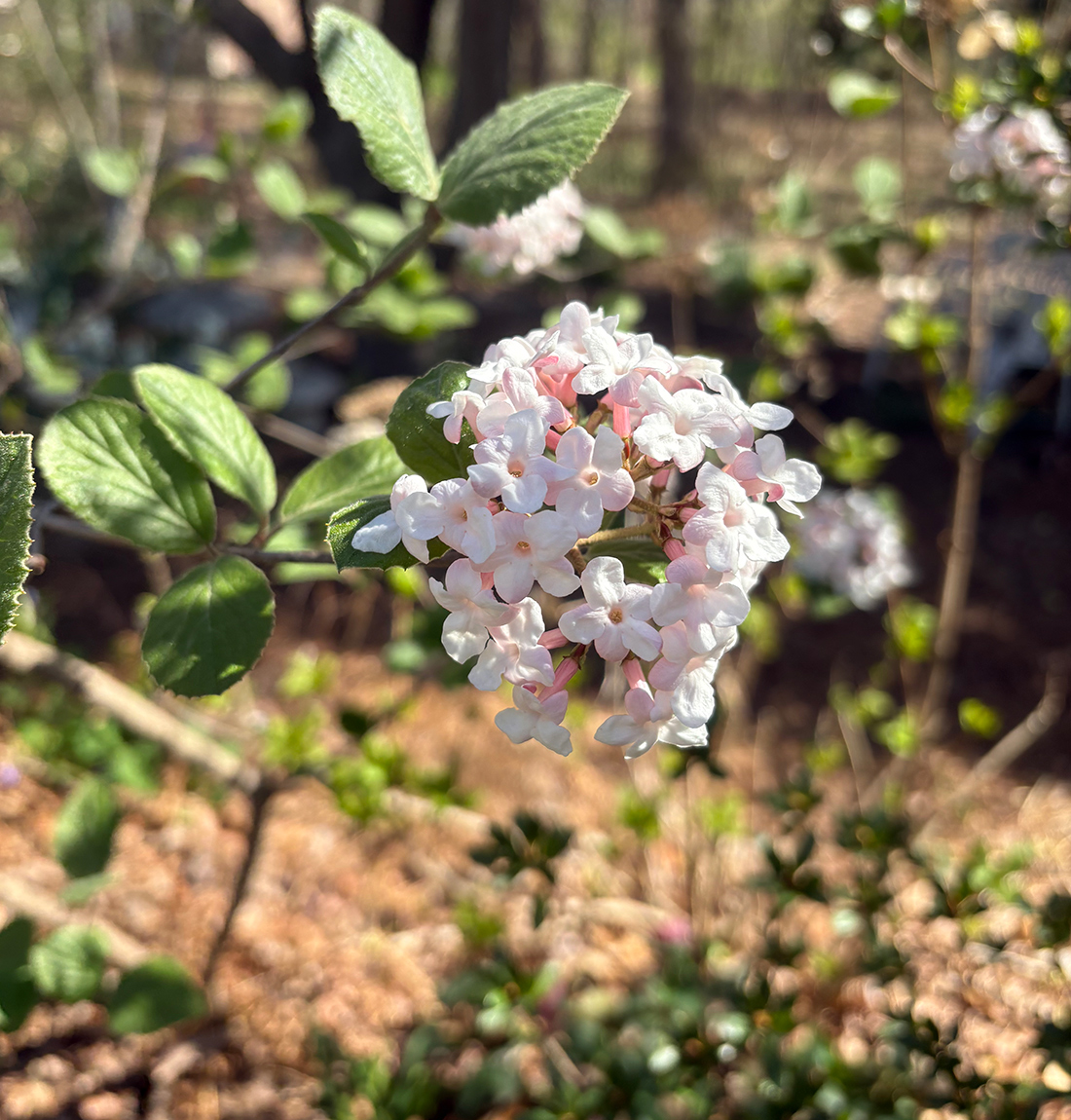 We start off with what looks to be the heavenly scented, semi-snowball bloom cluster of a Judd viburnum (Viburnum × juddii, Zones 4–8). After their fragrant spring show, berry-like fruit form in summer that ripen to red and eventually black.
We start off with what looks to be the heavenly scented, semi-snowball bloom cluster of a Judd viburnum (Viburnum × juddii, Zones 4–8). After their fragrant spring show, berry-like fruit form in summer that ripen to red and eventually black.
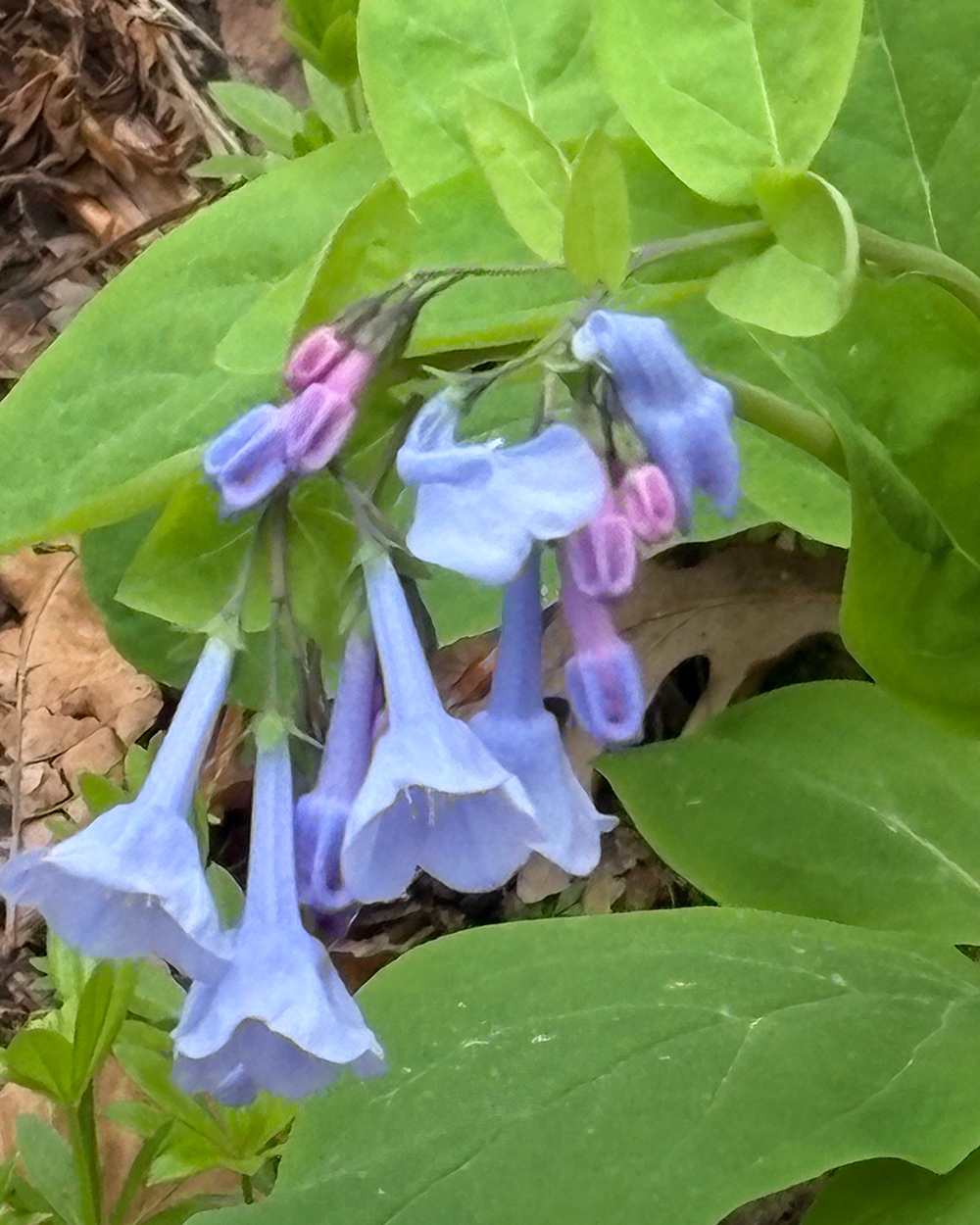 Much lower to the ground, we have the always-delightful trumpet flowers of Virginia bluebell (Mertensia virginica, Zones 3–7). A tiny bloom that provides a spectacular range of color, bright pink buds shift to purple and blue as the flowers unfurl.
Much lower to the ground, we have the always-delightful trumpet flowers of Virginia bluebell (Mertensia virginica, Zones 3–7). A tiny bloom that provides a spectacular range of color, bright pink buds shift to purple and blue as the flowers unfurl.
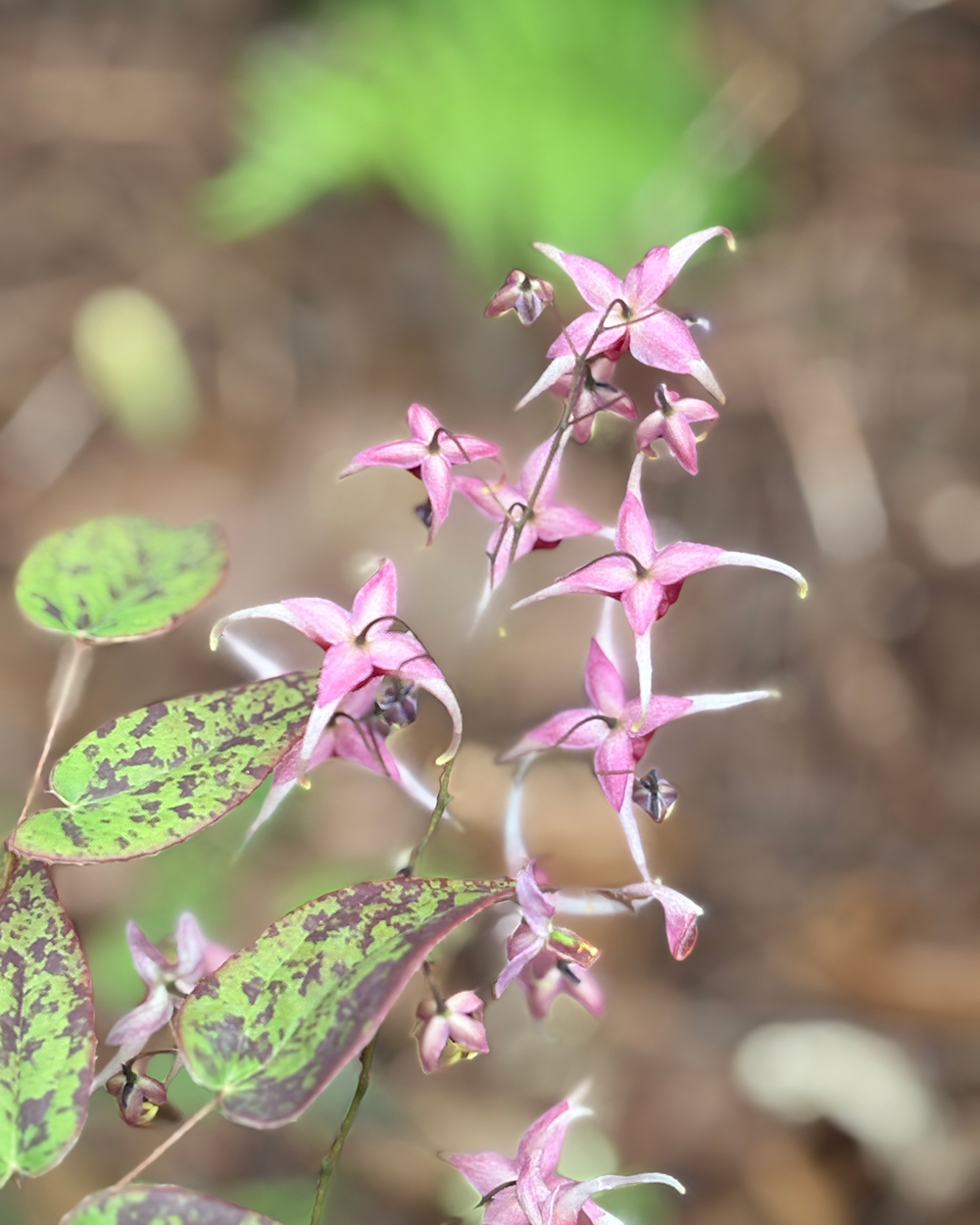 In Carla’s woodland garden, shade plants need to pack as much punch as the selections in her sunnier spots. Pink Champagne epimedium (Epimedium ‘Pink Champagne’, Zones 5–8) is an easy choice for fantastical flowers and foliage that provide color in multiple seasons—or year-round, if your winters are mild.
In Carla’s woodland garden, shade plants need to pack as much punch as the selections in her sunnier spots. Pink Champagne epimedium (Epimedium ‘Pink Champagne’, Zones 5–8) is an easy choice for fantastical flowers and foliage that provide color in multiple seasons—or year-round, if your winters are mild.
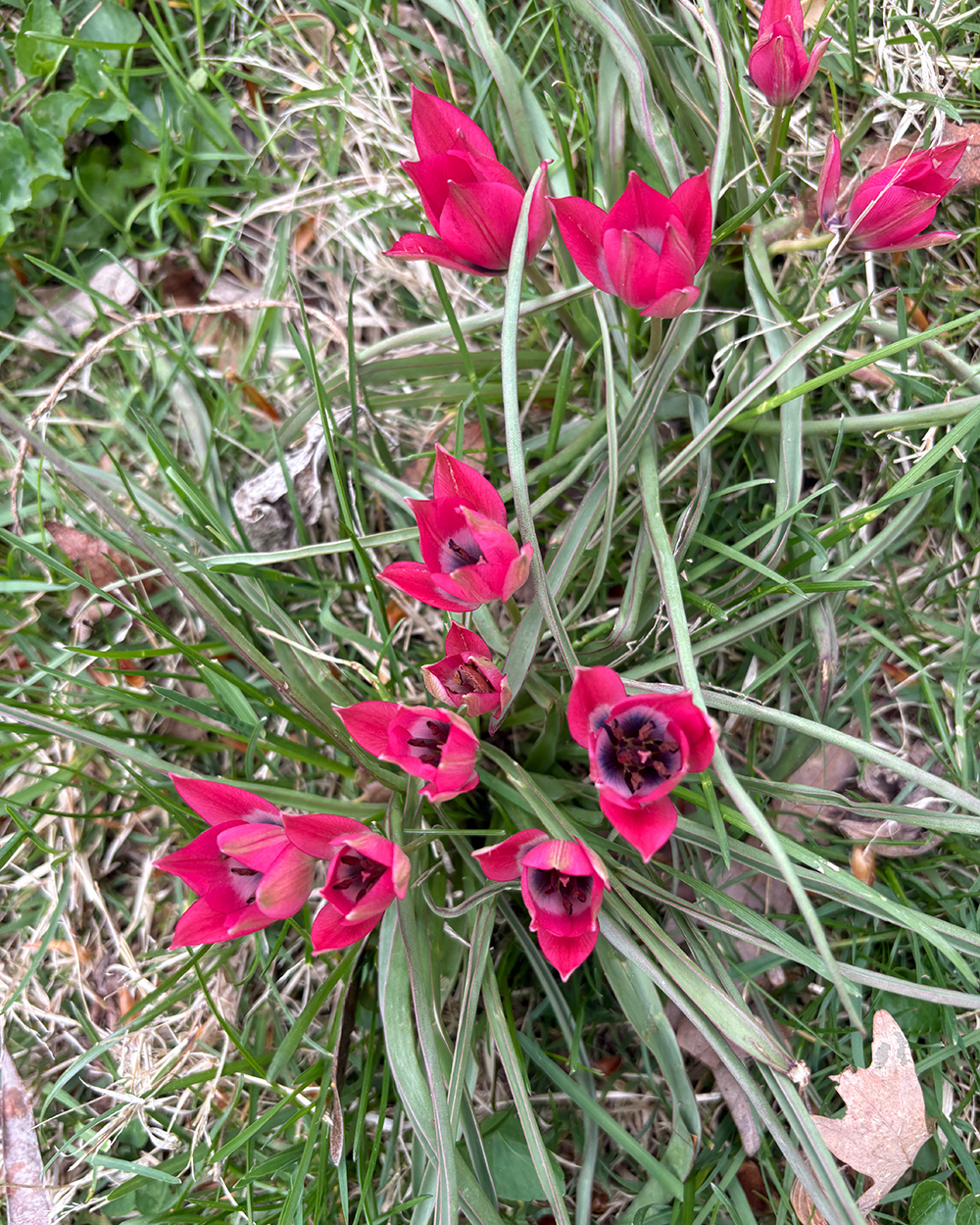 Species tulips often come in a smaller package than their modern relatives, but pick the right variety like Carla has and they provide just as much color and interest. ‘Little Beauty’ (Tulipa ‘Little Beauty’, Zones 3–8) dazzles with bright pink petals and bold blue centers.
Species tulips often come in a smaller package than their modern relatives, but pick the right variety like Carla has and they provide just as much color and interest. ‘Little Beauty’ (Tulipa ‘Little Beauty’, Zones 3–8) dazzles with bright pink petals and bold blue centers.
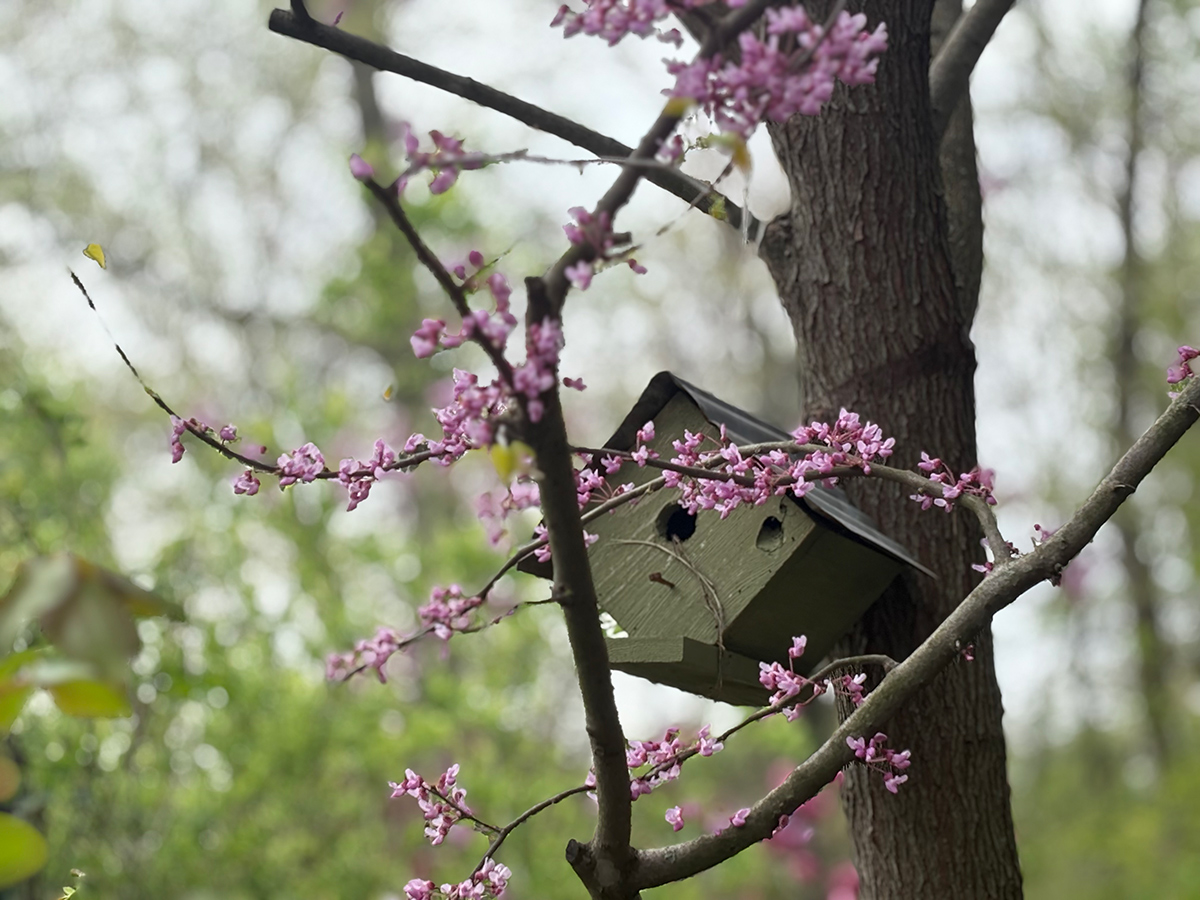 Carla’s garden is alive with color from all angles! Low-growing bulbs and perennials draw your eyes down, but don’t forget to look up at her marvelous mix of spring-flowering trees and shrubs. This Eastern redbud (Cercis canadensis, Zones 4–8) is giving some birds a marvelous show of color right outside their door.
Carla’s garden is alive with color from all angles! Low-growing bulbs and perennials draw your eyes down, but don’t forget to look up at her marvelous mix of spring-flowering trees and shrubs. This Eastern redbud (Cercis canadensis, Zones 4–8) is giving some birds a marvelous show of color right outside their door.
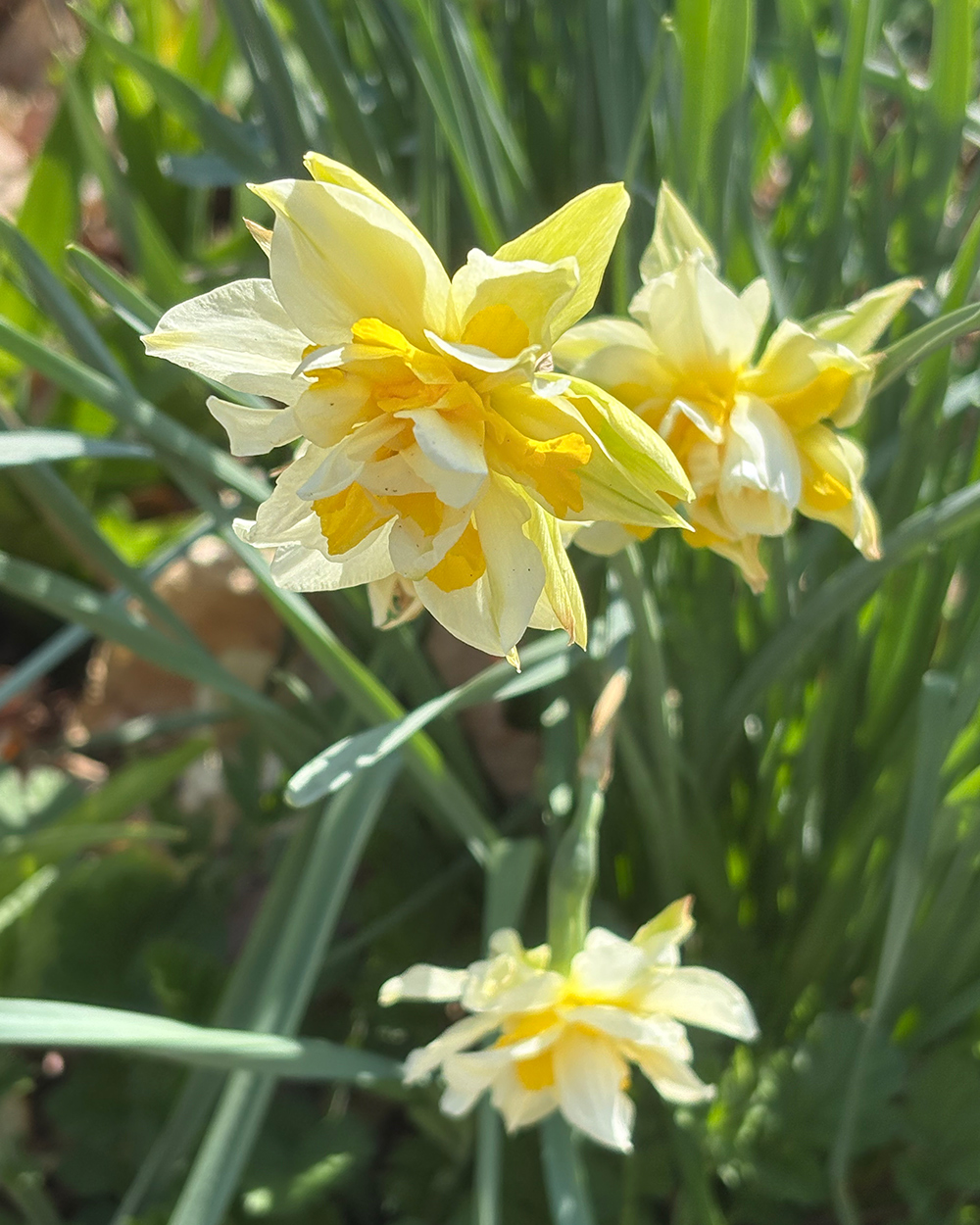 While early spring has passed and a greater array of blooms have emerged, Carla’s collection of daffodils are still putting on a delightful show. Ambon daffodils (Narcissus ‘Ambon’, Zones 3–7) are the blooms that just keep giving, with layer upon layer of yellow and white ruffled petals.
While early spring has passed and a greater array of blooms have emerged, Carla’s collection of daffodils are still putting on a delightful show. Ambon daffodils (Narcissus ‘Ambon’, Zones 3–7) are the blooms that just keep giving, with layer upon layer of yellow and white ruffled petals.
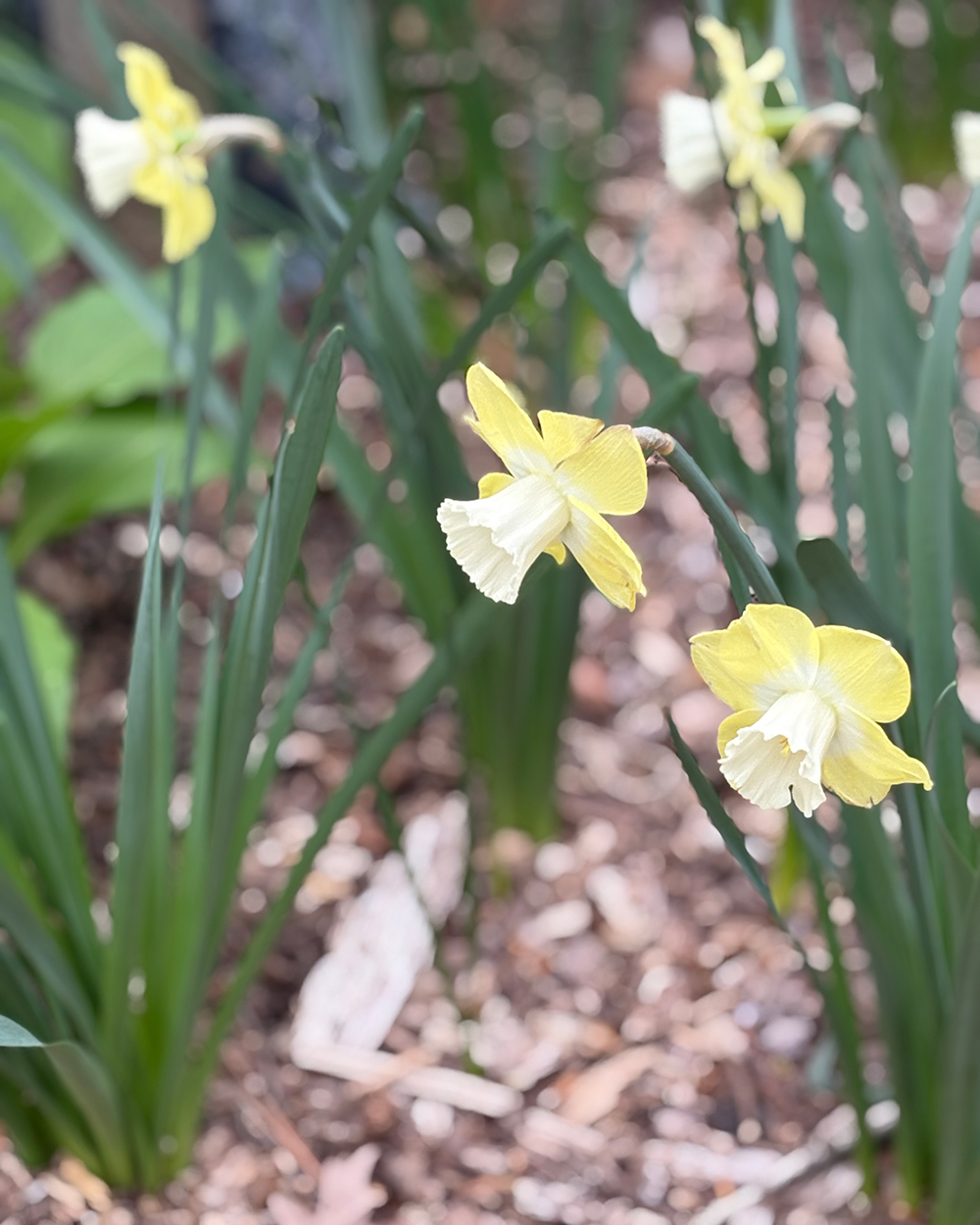 On the other hand, Avalon daffodils (N. ‘Avalon’, Zones 3–7) have that classic trumpet-daffodil shape but with a coloration that is really fascinating. The bright white corona appears to be bleeding out onto the light yellow crown of petals that surround.
On the other hand, Avalon daffodils (N. ‘Avalon’, Zones 3–7) have that classic trumpet-daffodil shape but with a coloration that is really fascinating. The bright white corona appears to be bleeding out onto the light yellow crown of petals that surround.
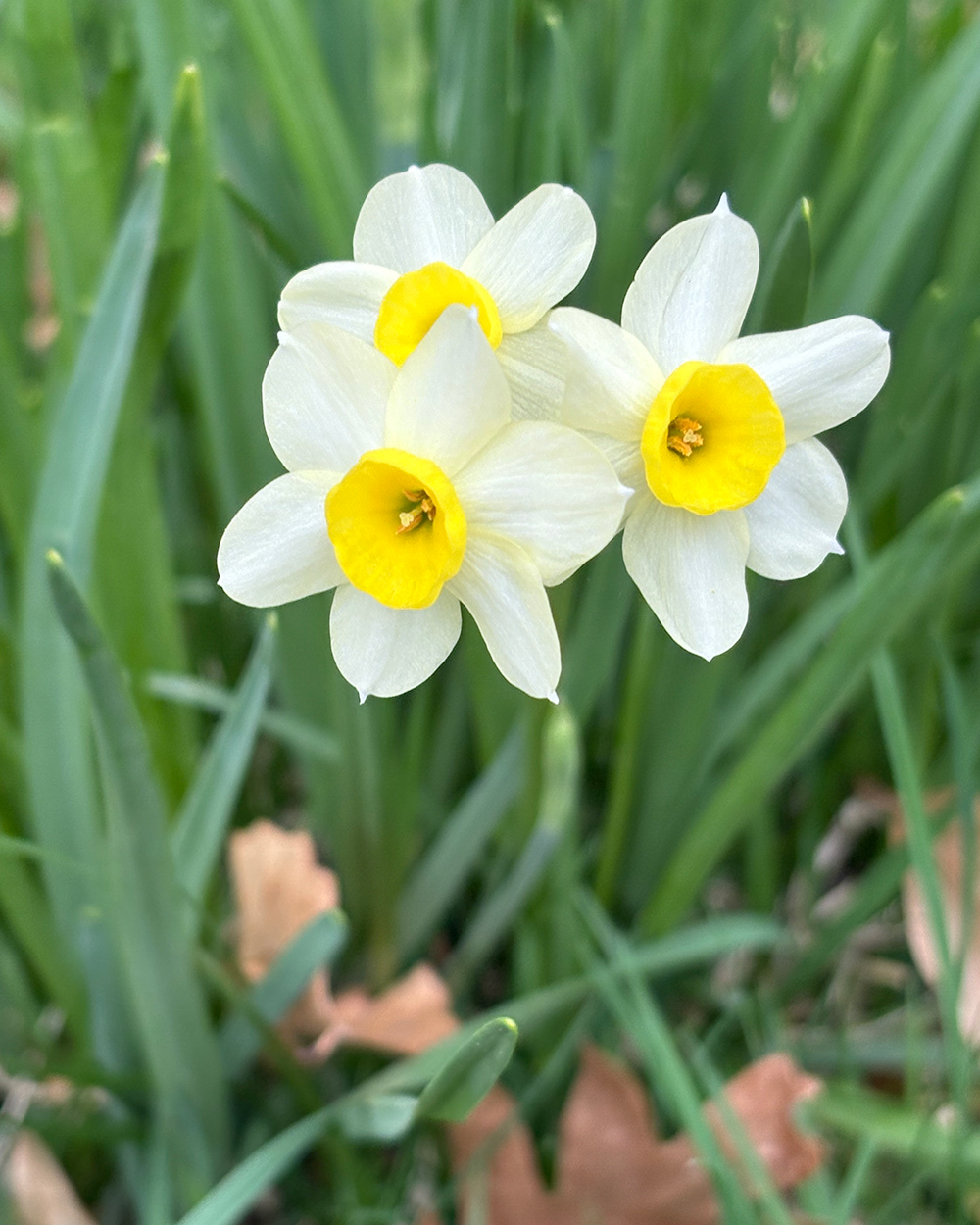 Finally, these cheerful ‘Minnow’ daffodils (N. ‘Minnow’, Zones 5–9) are small—maxing out at 6 to 8 inches tall—but put on a big show. ‘Minnow’ is a tazetta type, producing bunches of 3 to 5 fragrant blooms on one stem.
Finally, these cheerful ‘Minnow’ daffodils (N. ‘Minnow’, Zones 5–9) are small—maxing out at 6 to 8 inches tall—but put on a big show. ‘Minnow’ is a tazetta type, producing bunches of 3 to 5 fragrant blooms on one stem.
Lastly, Carla shared some incredible videos of these mid-spring blooms. Here she shows off one corner of her garden with distracting daffodils, a matching pair of prize azaleas, and a show-stopping magnolia.
Remember that we will be back in Carla’s garden tomorrow to enjoy the amazing foliage that she has captured during this first half of spring. Keep an eye on your inbox for more spring color in Pennsylvania.
We want to see YOUR garden!
Have photos to share? We’d love to see your garden, a particular collection of plants you love, or a wonderful garden you had the chance to visit!
To submit, send 5–10 photos to [email protected] along with some information about the plants in the pictures and where you took the photos. We’d love to hear where you are located, how long you’ve been gardening, successes you are proud of, failures you learned from, hopes for the future, favorite plants, or funny stories from your garden.
Have a mobile phone? Tag your photos on Facebook, Instagram or Twitter with #FineGardening!
Do you receive the GPOD by email yet? Sign up here
Fine Gardening Recommended Products
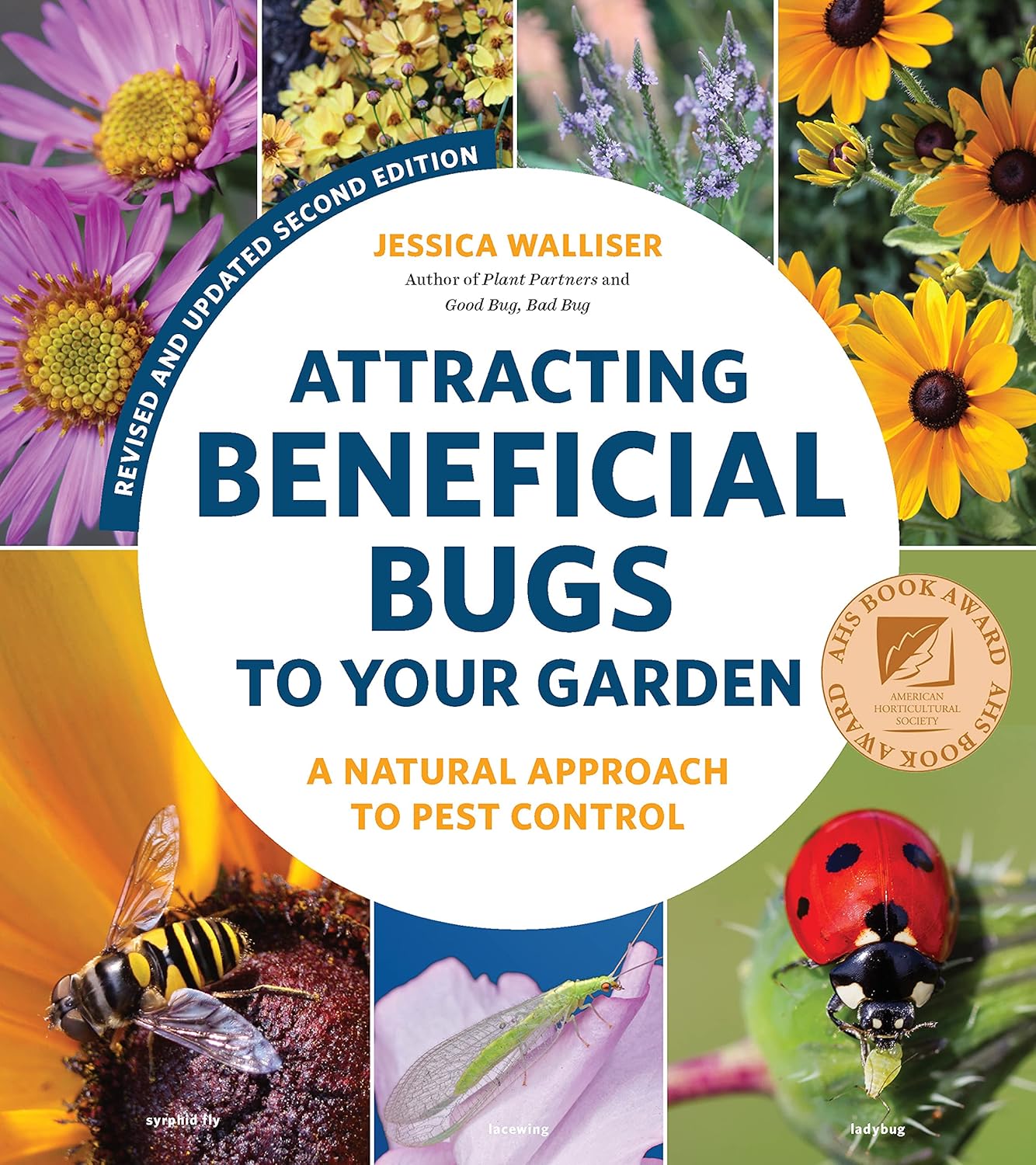
Attracting Beneficial Bugs to Your Garden, Revised and Updated Second Edition: A Natural Approach to Pest Control
Fine Gardening receives a commission for items purchased through links on this site, including Amazon Associates and other affiliate advertising programs.
This revised and updated edition of Jessica Walliser’s award-winning Attracting Beneficial Bugs to Your Garden offers a valuable and science-backed plan for bringing balance back to the garden. With this indispensable gardening reference—now updated with new research, insights, and voices—learn how to create a healthy, balanced, and diverse garden capable of supporting a hard-working crew of beneficial pest-eating insects and eliminate the need for synthetic chemical pesticides.
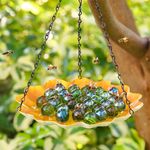
Bee Watering Station with Vivid Flower Design
Fine Gardening receives a commission for items purchased through links on this site, including Amazon Associates and other affiliate advertising programs.
Thoughtful Combo: You will receive a bee feeder and 30 glass marbles. This thoughtful combo can provide clean water for the bees, you just need to put the marbles into the bee watering station, add water (note: the water level should not exceed the height of the marbles) and hang them in the right place. The round, colored marbles can provide a place for the bees to stand and prevent them from falling into the water, effectively keeping the bees safe. Fine Material: This exquisite bee bath is made of high quality iron material, smooth surface, rust and weather resistant, not easy to fade, sturdy and reliable. Bee cups for garden can well meet the drinking water needs of lovely bees, and it can also provide food for bees, such as sugar water, nectar, etc., attracting more bees to your outdoor area and making your garden full of vitality. Perfect Size: The butterfly watering station has an overall height of 13.4 inches, a bowl diameter of 9.4 inches, and a weight of 0.44 pounds. The bee cup serves the needs of the bees well without plunging them into dangerously deep water or taking up unnecessary space in your garden, and this compact and efficient design makes it a practical addition to any outdoor space. Elegant Design: Our bee watering cups are designed in unique flower shapes with vibrant and realistic colours to attract lovely bees to your garden and patio, bee feeders for outside are not only functional but can also be used as a landscaping element, their vibrant floral patterns enhance the beauty of your garden. Multicolored Decoration: Colorful bee water stations look like flowers in a garden, flower bed or pot and attract bees and butterflies. They can drink or bathe in bee feeders, which are highly decorative and practical.
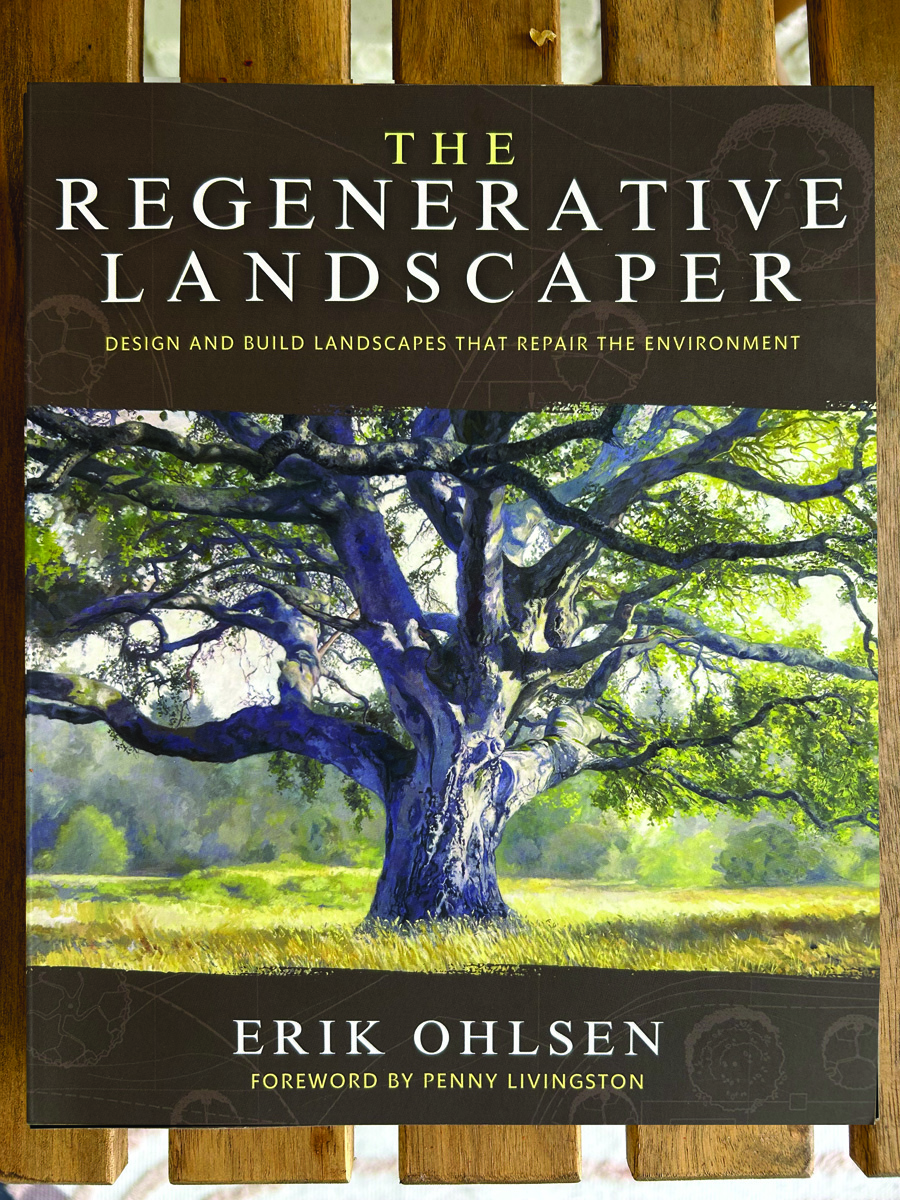
The Regenerative Landscaper: Design and Build Landscapes That Repair the Environment
Fine Gardening receives a commission for items purchased through links on this site, including Amazon Associates and other affiliate advertising programs.
2024 Nautilus Award Gold Medal Winner! This awe-inspiring guide weaves together permaculture design, food resiliency, climate adaptation, community organizing, and indigenous wisdom that you can implement in your own backyard.








